Contact for the resource
European Topic Centre - University of Malaga
184 record(s)
Type of resources
Available actions
Topics
Keywords
Contact for the resource
Provided by
Years
Formats
Representation types
Update frequencies
Status
Service types
Scale
Resolution
panaceaKeywords
GEMET keywords
-
The layer shows type and location of pilot sites involved in ACT4LITTER project. ACT4LITTER is a Study Project of the biodiversity protection community funded by the Interreg Med Programme. The ACT4LITTER project deals with “Joint measures to preserve natural ecosystems from marine litter in the Mediterranean protected areas”.
-
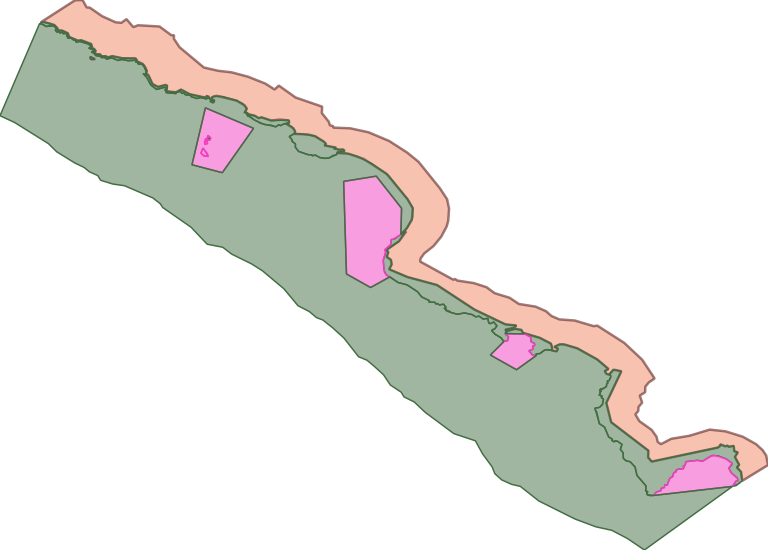
This dataset represents the coverate of the second Montenegro Marine Protected Area, the Nature Park "Katič" declared on the occasion of celebrating 30th anniversary of the adoption of the Declaration on the Ecological State of Montenegro. The "KaticThe Nature Park "Katič" covering 2744,93 hectares in both terrestrial and marine part, with 276.90 ha in the protection zone II, while 2468.29 ha in the protection zone III (out of which 2291.77 ha belong to the sea, and 176.52 ha to the land). A zone from the coastline of the MPA toward inland of 500m width defined as buffer but without any protection level.
-
The layer shows type and location of partners involved in ACT4LITTER project. ACT4LITTER is a Study Project of the biodiversity protection community funded by the Interreg Med Programme. The ACT4LITTER project deals with “Joint measures to preserve natural ecosystems from marine litter in the Mediterranean protected areas”.
-
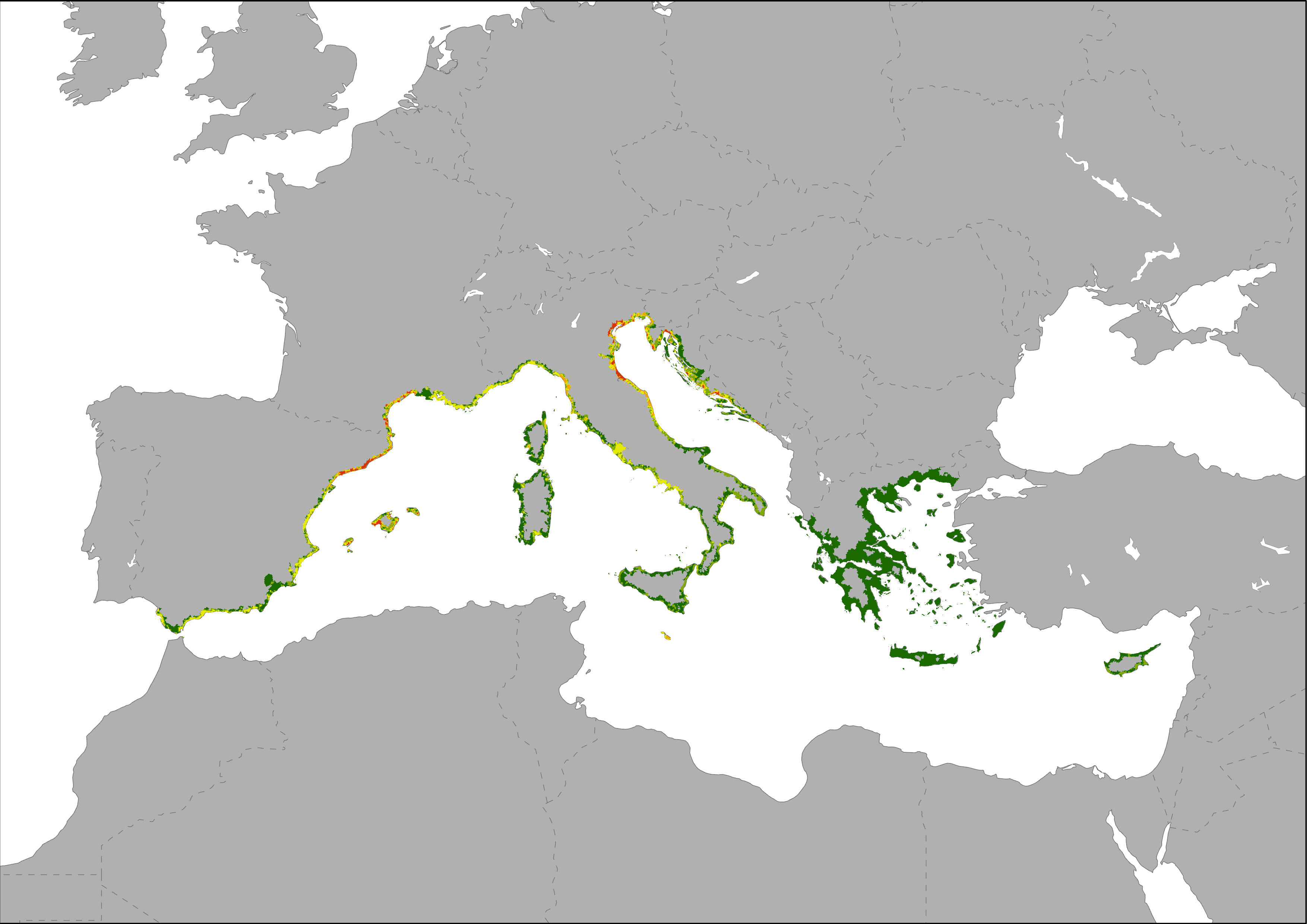
Map showing bed places per km2 as an indicator of the local intensity of tourism capacity. This index is based on Eurostat tourism statistic on bed places and the DMSP-OLS Nighttime Lights Time Series image. Eurostat's tourism capacity statistics differentiate between coastal and non-coastal areas within a NUTS2 region. The total number of beds in coastal areas of a NUTS2 region was disaggregated to the most intense nighttime light emission pixels of the Nighttime Lights Time Series assuming that most bed places are located in areas with high nighttime light emissions. Results are showing low to high intensive tourism capacity per km2 pixel.
-
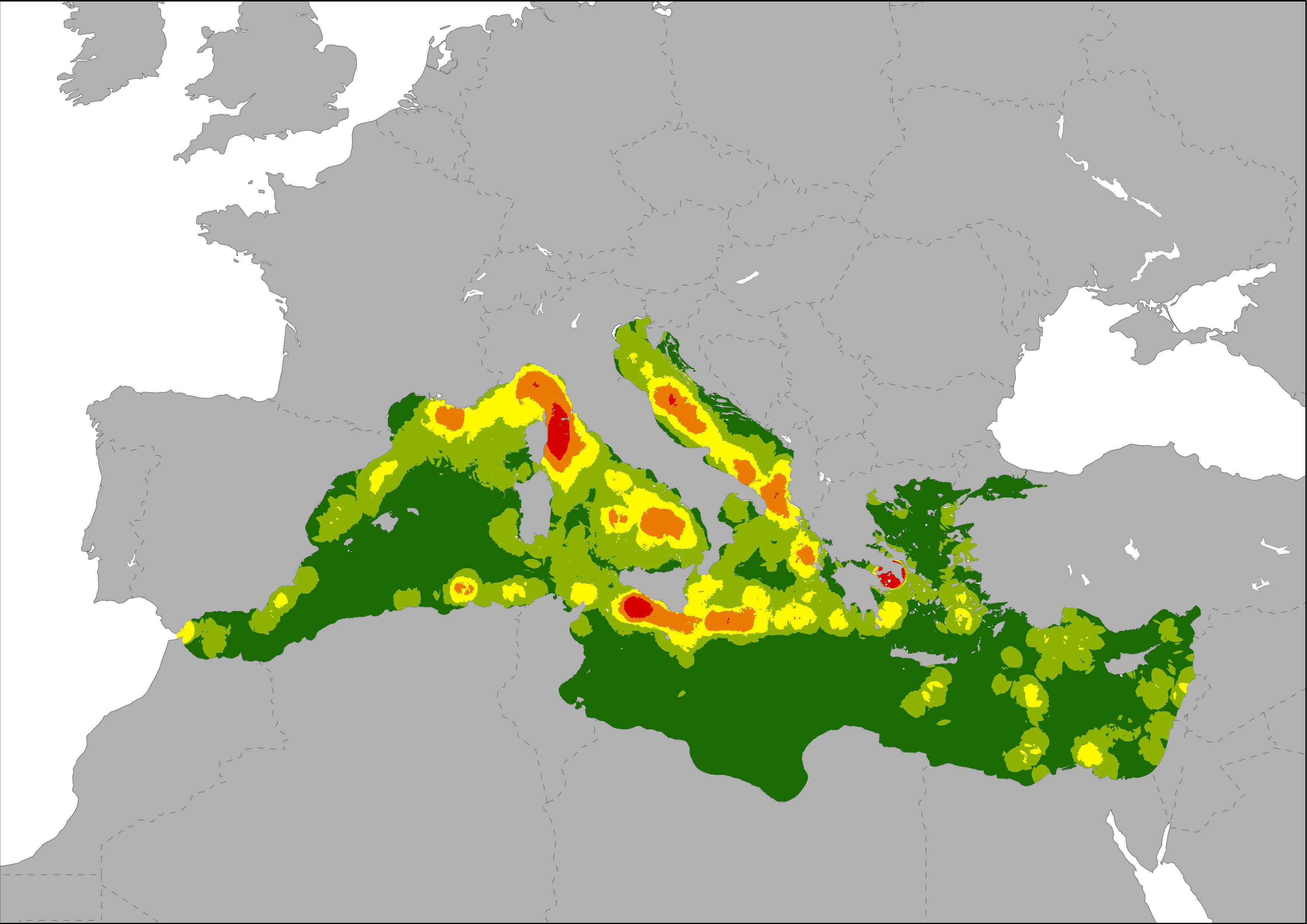
The map shows the spatial distribution of the frequency of oil spills in the Mediterranean Sea, indicating where the probability of an oil discharge is higher. Oil spills were represented as a density layer calculated using data on ship accidents and oil discharges registered by the Mandate of the Regional Marine Pollution Emergency Response Centre for the Mediterranean Sea (REMPEC), and also the oil spills map generated by Cinirella et al., 2012 (based on JRC data, 2009).
-
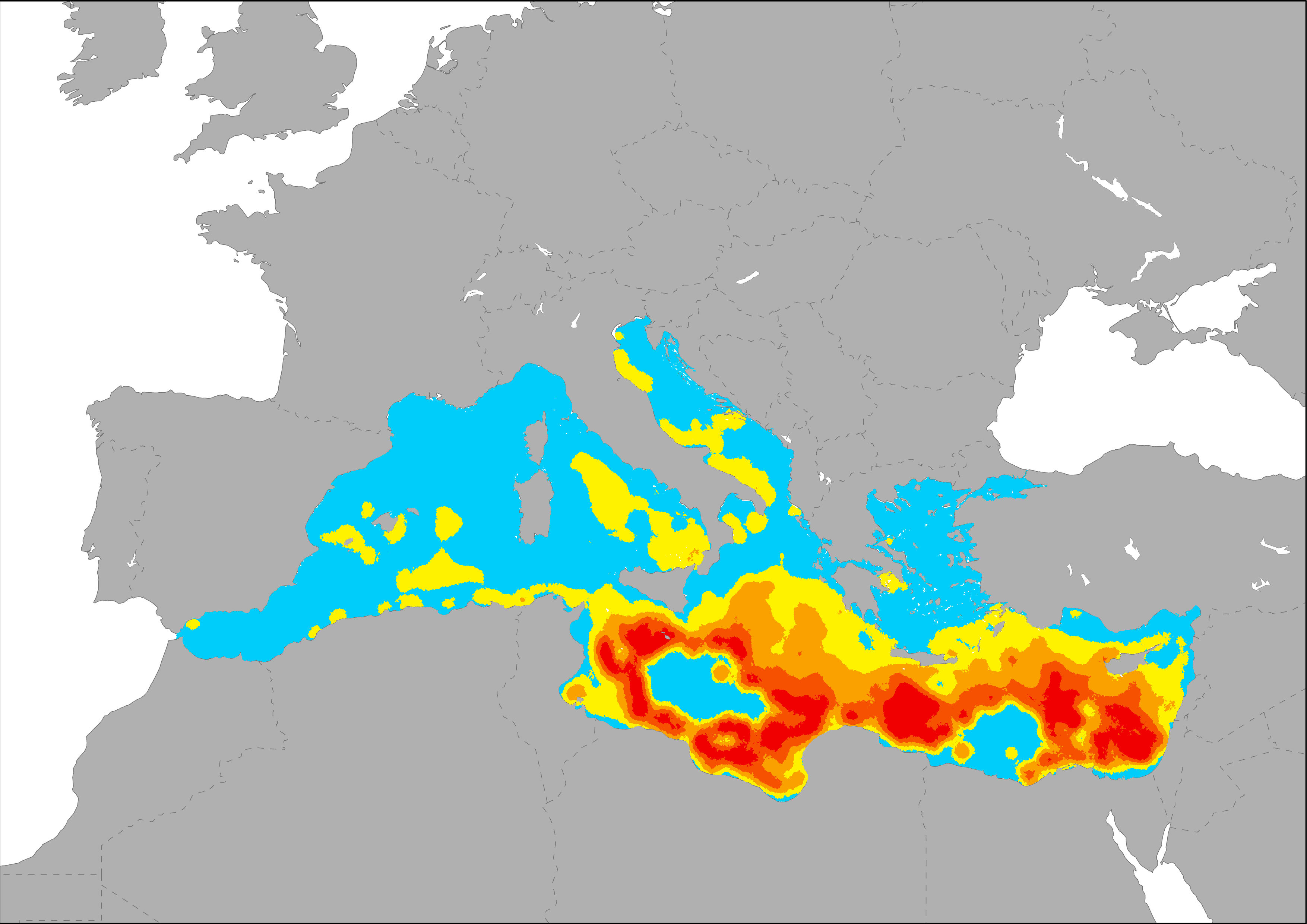
The indicators represent the distribution and degree of accumulation of marine in the Mediterranean Sea. Main source data were modelled by Lebreton et al., 2012 using a Lagrangian particle tracking model to simulate 30 years of input and transport of floating debris in the world’s ocean. The relative contribution of different sources to the total amount was taken into account in their model.
-
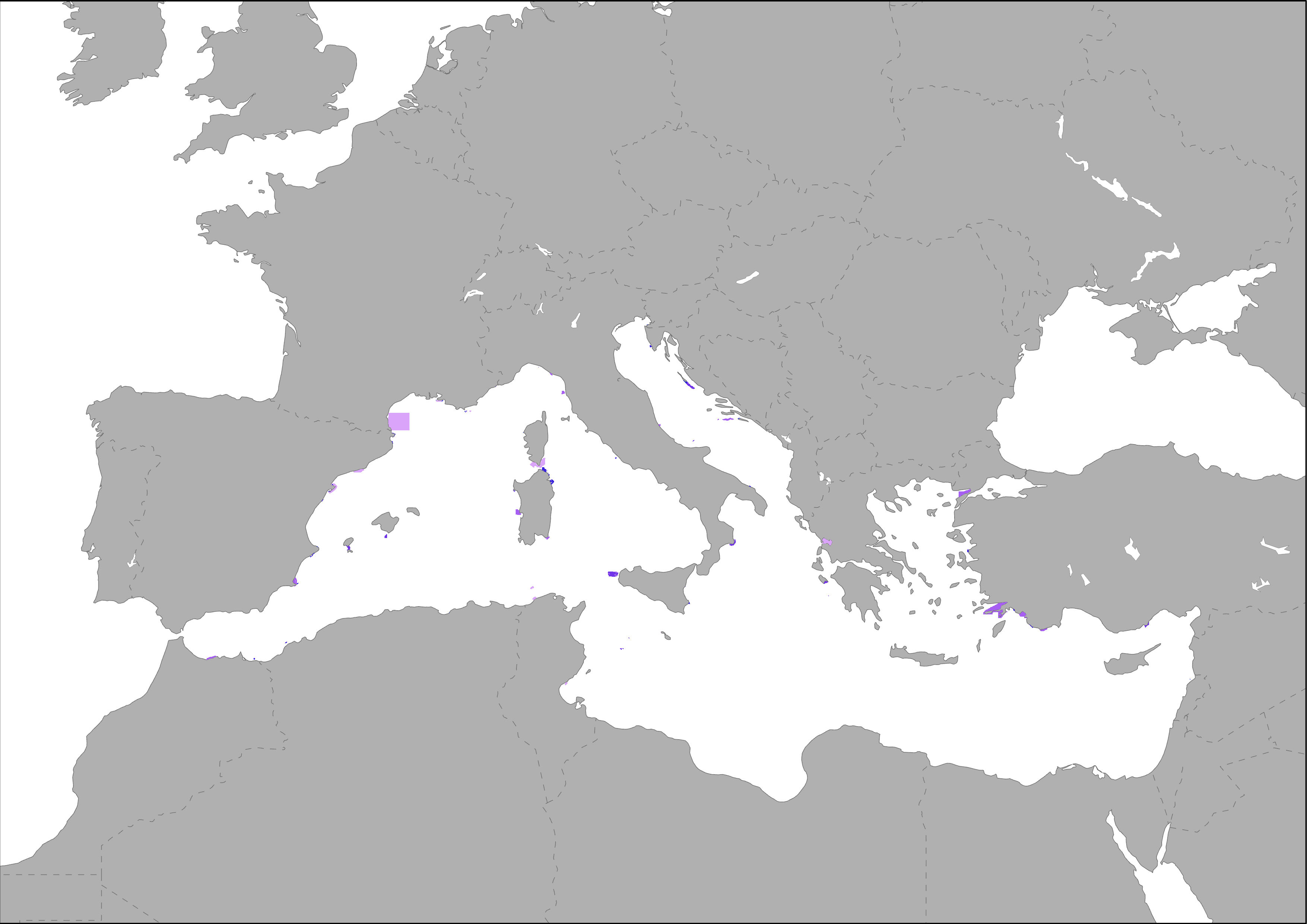
The indicator of management effort was made by summing all the overlapping MPAs on each 1ha pixel across the whole Mediterranean Sea (based on MAPAMED, the database on Mediterranean Marine Protected Areas, MedPAN, RAC/SPA, 2014). One to three points were given to each 1ha-pixel inside MPAs according to the increasing densities of permanent staff and boats for research and surveillance in the MPA; one point was given to all the pixels inside MPAs with management plans (Management effort index). Management effort scores varied from zero to seven.
-
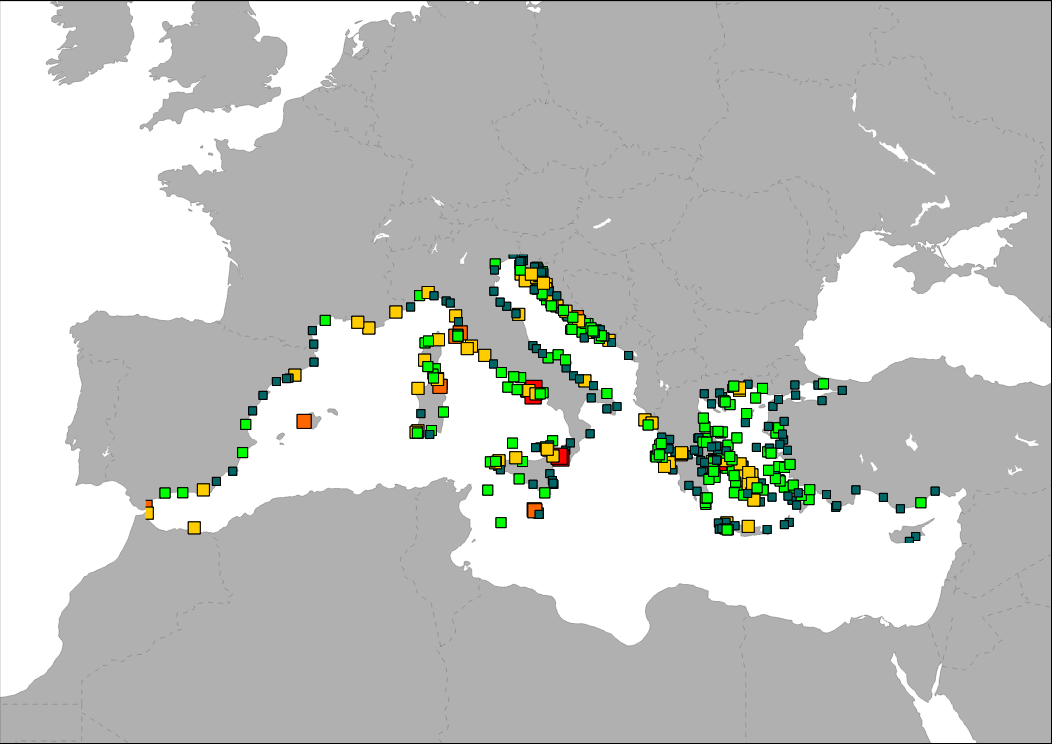
The map shows the distribution of main ferry ports in the Mediterranean Sea. Ports are classified in groups according to its level of activity.
-
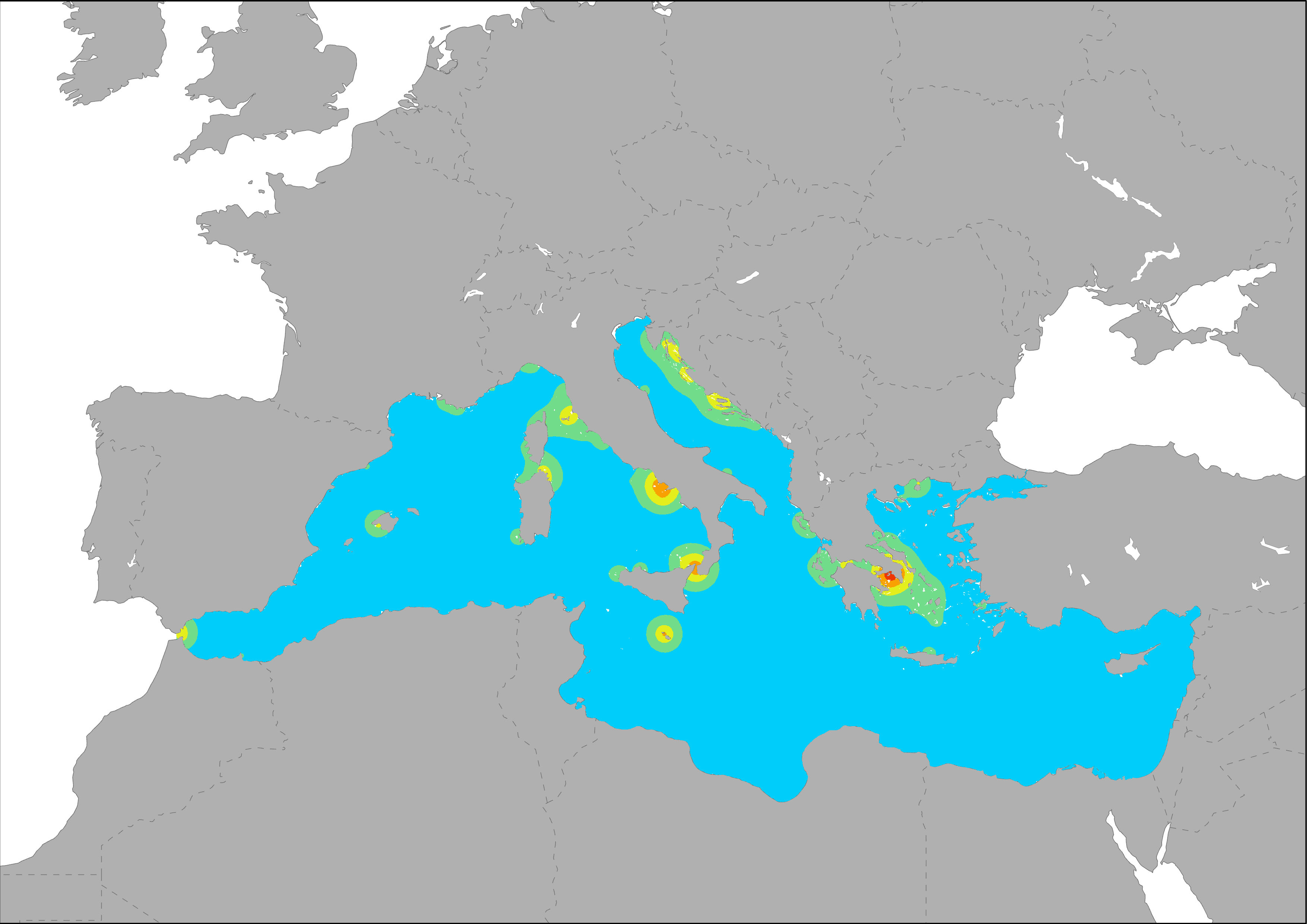
The map shows the distribution of main ferry ports in the Mediterranean Sea. Pressure on marine regions are represented by the port influence area, based also on their activity level. The dispersal of port-derived pollution was modeled as a diffusive plume based on their activity level using Eurostat data on transport of goods (thousand tonnes) and passengers (thousand passengers). Calculations were made following the same methodology developed for ESaTDOR Project (ESPON, 2013).
-
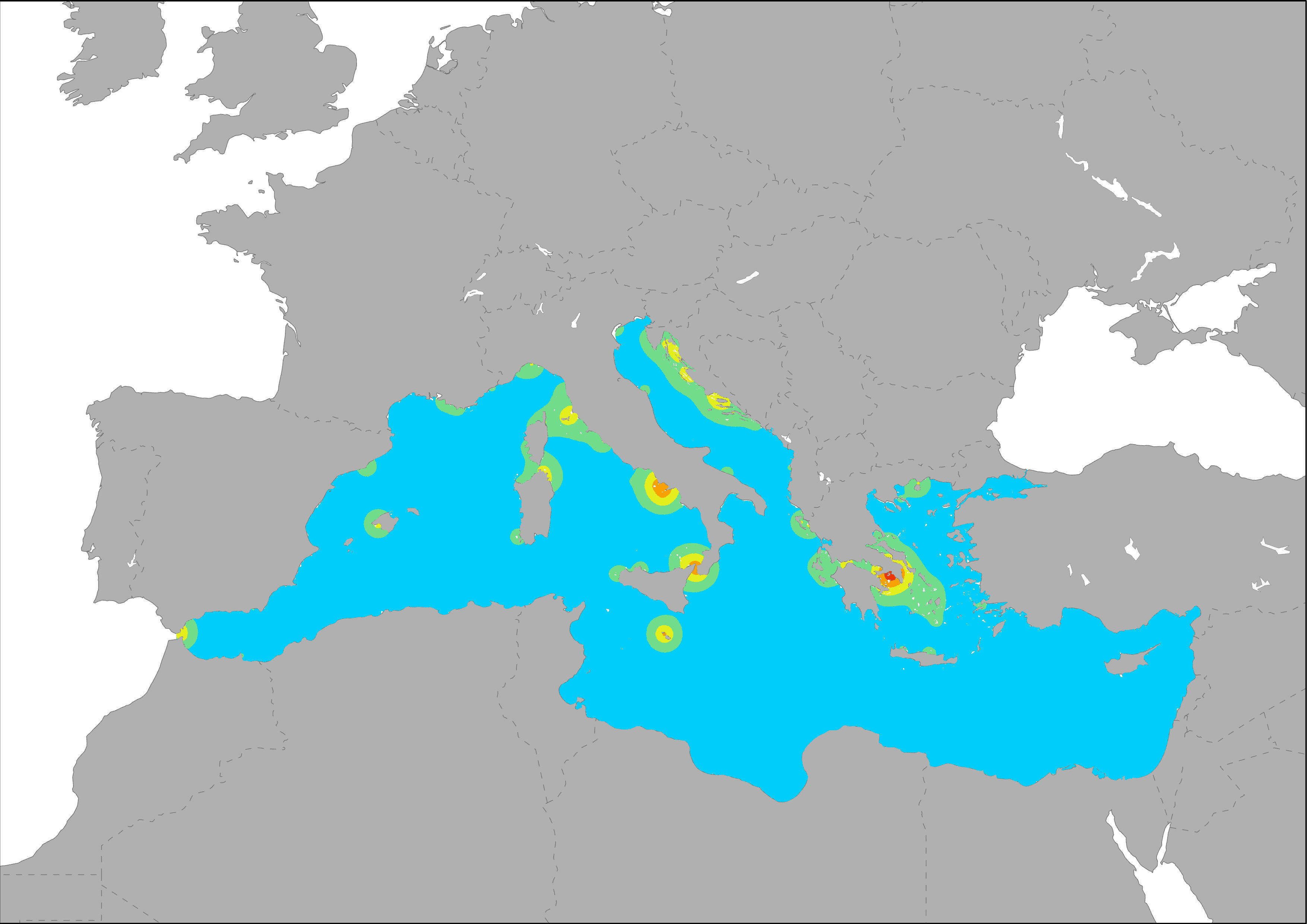
The map shows the distribution of main passengers transport ports in the Mediterranean Sea. Pressure on marine regions are represented by the port influence area, based also on their activity level. The dispersal of port-derived pollution was modeled as a diffusive plume based on their activity level using Eurostat data on transport of goods (thousand tonnes) and passengers (thousand passengers). Calculations were made following the same methodology developed for ESaTDOR Project (ESPON, 2013).
